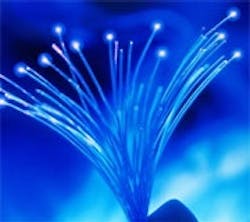Improvements in Fiberoptic Terminations Eliminate Obstacles to Installation
Users considering the prospect of running fiberoptics in lieu of copper often faced obstacles in material costs, as well as the labor skills needed for installations. Installing RJ45 connectors on Cat. 5e (copper) cable isn't for the bifocal-challenged faint of heart—especially with cheap, brittle and faintly color-coded twisted-pair cable. But fiber terminations were once the exclusive domain of communications professionals who exercised their skills on a routine basis. If these hurdles ever caused you trepidation when choosing the ideal physical layer for your plant networks, you'll be interested to learn the new solutions emerging and already on the market. They've made fiber a much easier choice, especially when it's the solution that makes the most sense.
When extending one's Cat. 5/Cat. 6 Ethernet network into the plant, the choice to run fiberoptic cable was often a foregone conclusion—copper networks simply can't function reliably or at the 10–100 Mb transmission rates we have come to expect when extended beyond 100 m, especially in noisy industrial environments. It might or might not have been plausible to install additional Ethernet switches or hubs at the extremes of the copper network, and in such instances, at least until recently, the vagaries of local power, environmental protection and area classification had to be considered. Despite its inherent challenges, fiberoptic cable was still the logical choice. The issues of power, environment and area classification had to be addressed, but this could be done where the service was needed—vs. intermediate junction boxes—which in turn could be much farther away.
Terminations were once the biggest challenge for those of us aiming to apply fiberoptics. The tried-and-true polish and epoxy methods use inexpensive hardware and remain the most versatile and robust technologies but require more setup time and greater training and skills than normally maintained in the typical plant maintenance shop, or even the local trade union hall. Even telephone company craftspeople who make these terminations routinely tend to have high error rates among less-experienced installers. When we need to install epoxy and polish ends, we contract with our telephone service provider to get the job done.
In recent years, however, developments made by fiberoptic suppliers have reduced the barriers to a trouble-free installation significantly. The most useful development is the introduction of easier termination tools, hardware and procedures. The Corning UniCam connector system was the first one we used in our plant. While the literature promises trouble-free terminations of various connectors in as little as a minute, it probably will take longer if your electricians are novices or haven't done any in a while. It also will take longer when the fiber terminates in noisy, cold, wet or otherwise unfriendly environments. Our people had some experience with UniCam but only get to practice maybe once a year. As a result, two ends of a six-fiber tray cable took the better part of a day to terminate, and the result was not as trouble-free as we would have liked. The kit for performing terminations is a little pricey—figure you will spend as much as or more than you would for a large tool box, depending on how many ends you need to terminate. A training video is provided, which is enough training for your typical experienced electrician, but you should budget a few hours to practice and review this video each time you plan a similar job.
Recently Belden introduced another solution that promises quick, simple and reliable fiber terminations. Called FiberExpress Brilliance field-installable connectors, Belden promises a no-tools termination in as few as 5 s. "The connector's patent-pending design not only eliminates the need for special tools, it also simplifies the installation steps typically associated with fiber terminations," claims Richard Perron, FiberExpress product manager at Belden (www.belden.com). Termination hardware can be reused as many as five times, meaning fewer throwaways should a fiber test be unsatisfactory.
The barriers to the widespread application of fiberoptics are much diminished, making it easier to heed the advice of Frank Madren, president of GarrettCom (www.garrettcom.com), who says, "Don't settle for the false economy of copper cabling when fiber is necessary to do the job right." Copper solutions will struggle to deliver the bandwidth, noise immunity, distance and security needed for production plant control networks. Thankfully, the increasing availability of improved tools and hardware continue to make industrial installations more accessible to end users.


